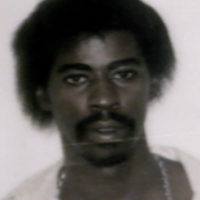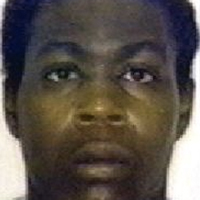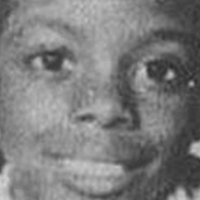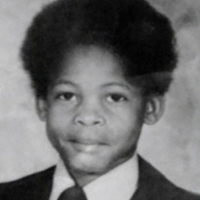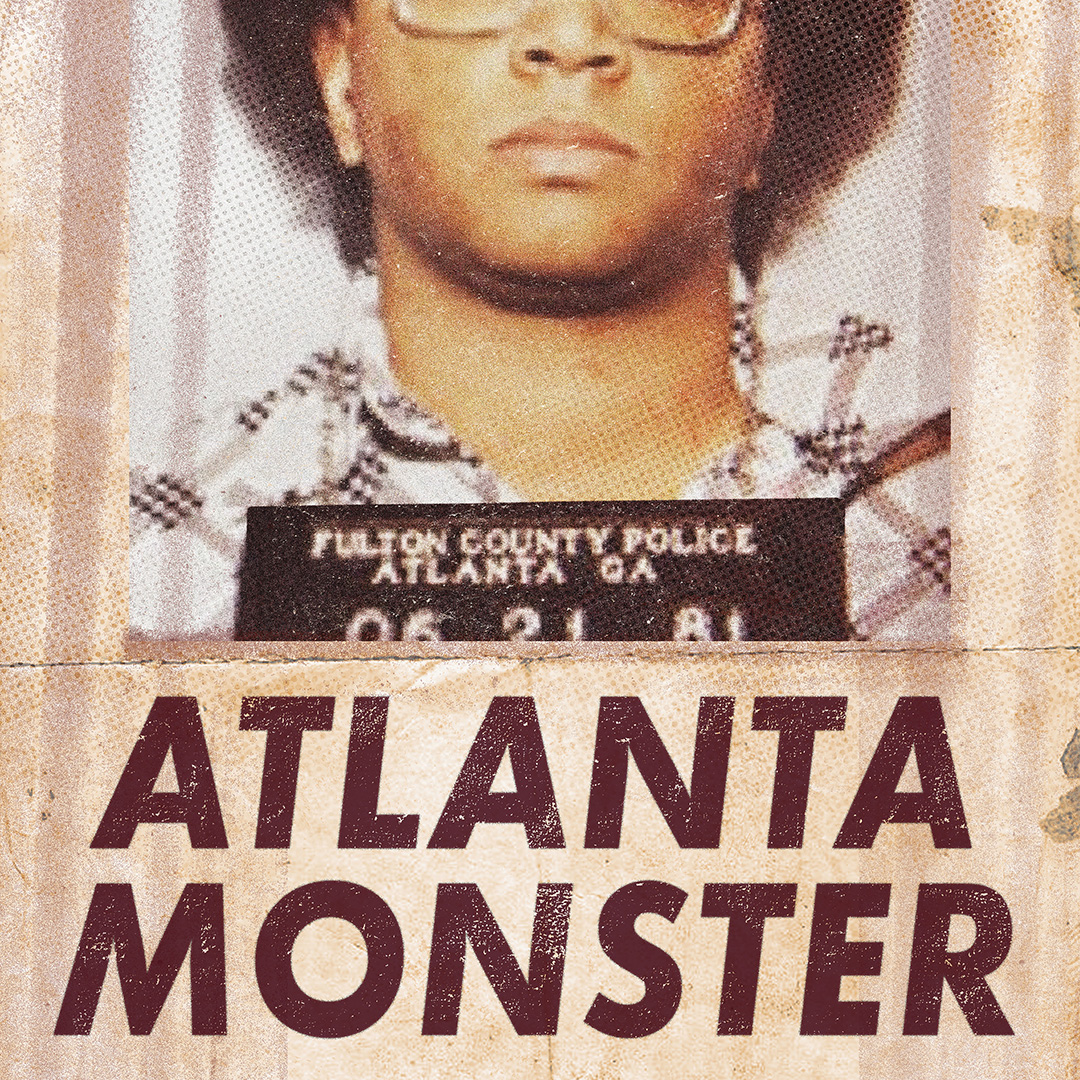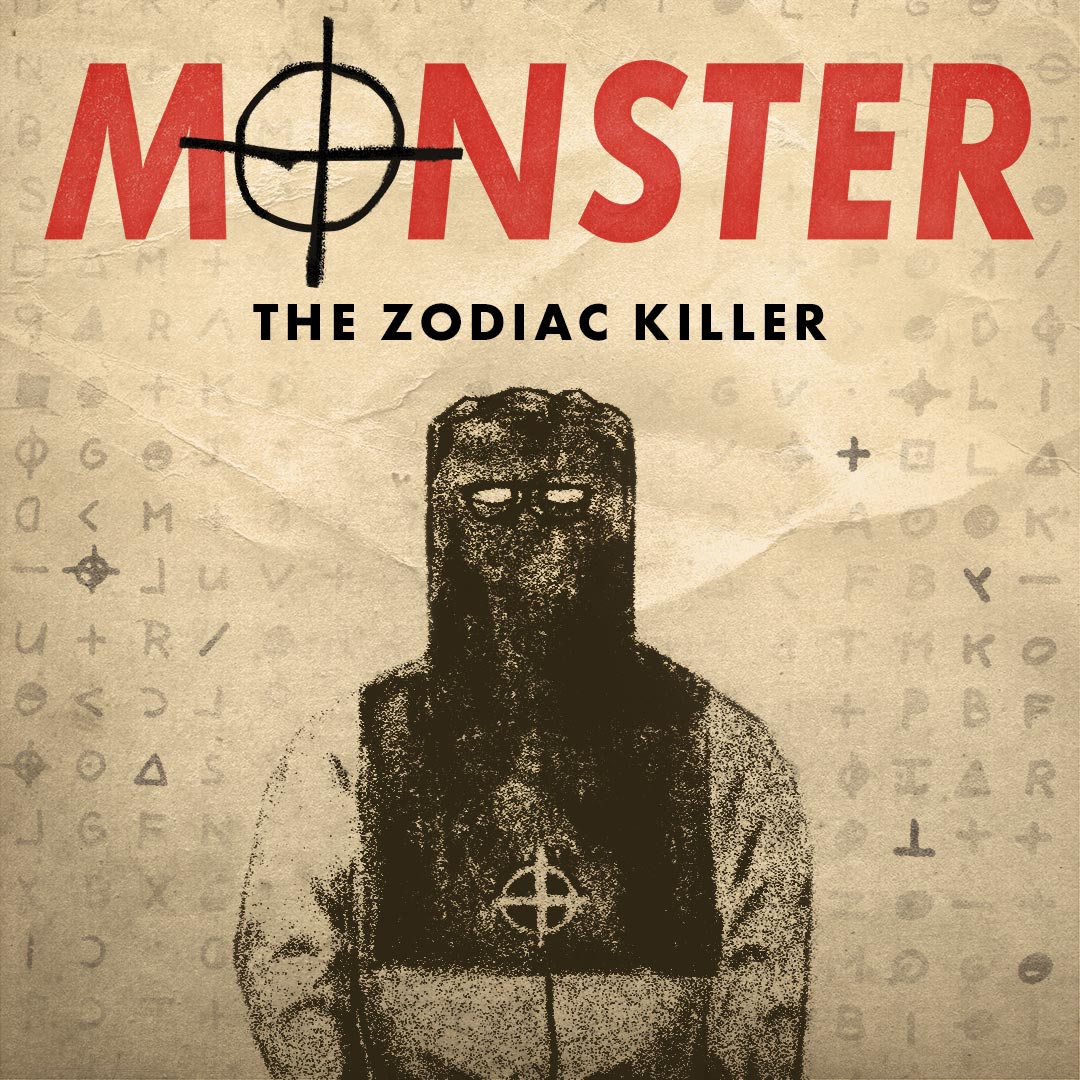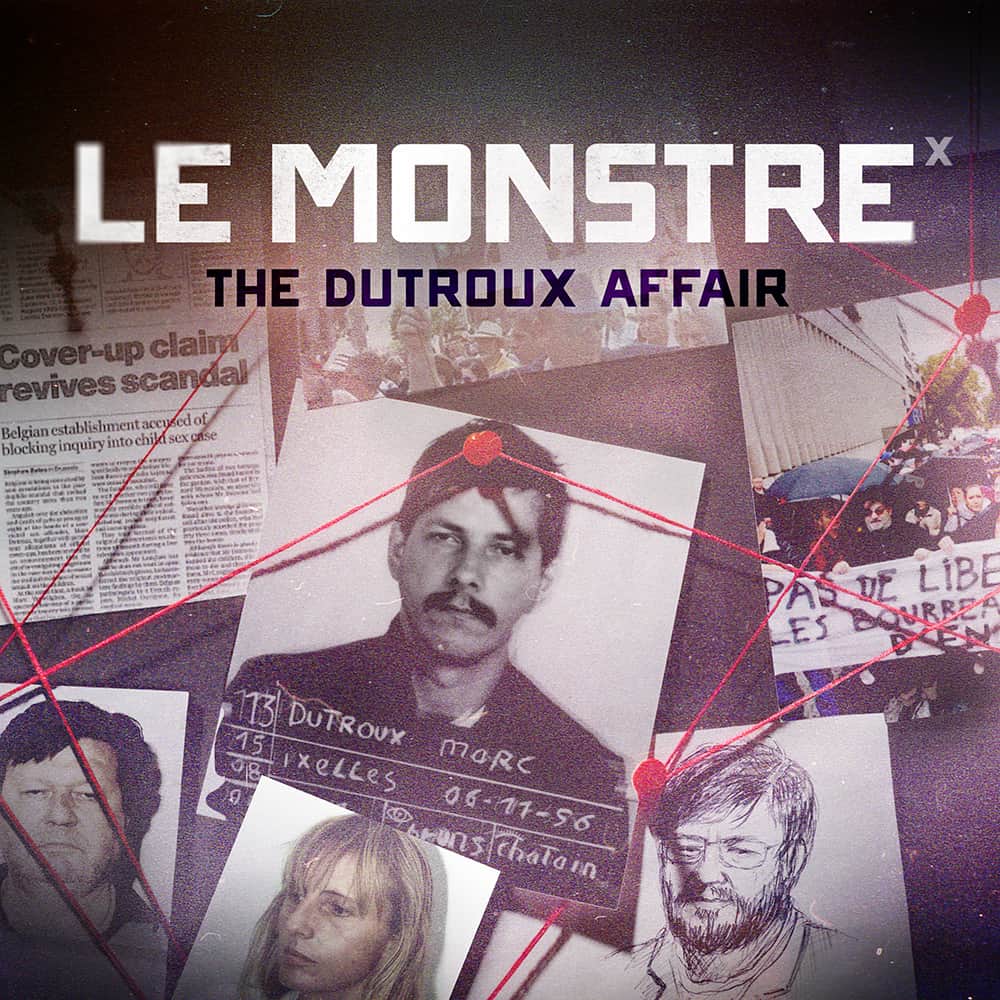Episode 4
Gemini
Wayne Williams through the eyes of those seemingly closest to him…
– Jim Procopio, FBI
I’ve recently been told that if I release this podcast, “bad things” are going to happen to me in the sense of a threat on my life, or my safety, or that of my family.
– Neil Strauss, Journalist/Host
I’ve recently been told that if I release this podcast, “bad things” are going to happen to me in the sense of a threat on my life, or my safety, or that of my family.
– Neil Strauss, Journalist/Host
– Dr. Blackwelder
Victims
Nathaniel Cater
Age 28
Last Seen 05/21/1981
Jimmy Ray Payne
Age 21
Last Seen 04/21/1981
Eric Middlebrooks
Age 14
Last Seen 05/18/1980
Yusuf Bell
Age 9
Last Seen 10/21/1979
Transcript
Payne Lindsey: This episode of Atlanta Monster contains explicit language. Listener discretion is advised.
Dewayne Hendrix: I’m in a recording studio and I’m recording a song, and my phone rings. It’s Wayne Williams. Everybody in the studio is like, like everyone was stunned.
Payne Lindsey: From that point forward, what transpired? What did Wayne say? What was developing after that?
Dewayne Hendrix: Welcome to the real world, Neo.
Payne Lindsey: So you know Wayne Williams?
Dewayne Hendrix: Absolutely.
Payne Lindsey: Describe Wayne to me, what’s he like?
Dewayne Hendrix: Brilliant asshole. Very intelligent asshole. That’s the best way I could put it and I don’t mean it in a bad way because I’m a asshole at times. But he’s the type of person that you have to be very strong to deal with him, because mentally he could just run over the average person.
Intro: In Atlanta, another body was discovered today, the 23rd.
Intro: At police task force headquarters, there are 27 faces on the wall, 26 murdered, 1 missing.
Intro: We do not know the person or persons that are responsible, therefore, we do not have a motive.
continue reading
Payne Lindsey: From Tenderfoot TV and HowStuffWorks in Atlanta-
Intro: Like 11 other recent victims in Atlanta, Rogers apparently was asphyxiated.
Intro: Atlanta is unlikely to catch the killer unless he keeps on killing.
Payne Lindsey: This is Atlanta Monster.
Dewayne Hendrix: The average person doesn’t have the mental acumen to be able to hold conversations with this guy. I’ll tell you about the asshole part. There have been multiple conversations that me and him have had that end up in me basically having to curse him out and tell him, “Look dude, you gotta shut the fuck up and let me do what I know how to do. You’ve been in prison for over 30 years and you don’t understand how the world is operating right now, you understand? And you can’t go under the premise and guise of how things were operating before you left the real world, so shut the fuck up and let me do what I do.”
Payne Lindsey: Trying to control things or what?
Dewayne Hendrix: Absolutely, absolutely. If you’re not strong, he will have you doing some shit that maybe you don’t want to do. It’s been a roller coaster ride. It’s been a roller coaster ride for the simple fact that you’re dealing with, wow, a microcosm of so many different emotions and you’re dealing with such an extreme personality. You’re dealing with a guy who was supposed to be LA Reed. You understand? Wayne Williams started a radio station when he was 15 years old and it was successful. His family was educators and his dad was a college professor. He knew the people in the affluent circles of the city of Atlanta. You imagine somebody like myself who has a very strong personality. Now I meet this guy 35 removed from everything that has transpired, and all of the psychological damage and everything else that he’s had to endure. So we bump heads a lot, you know? But you have to think, here’s a guy who had all this promise and was a only child, and has been in prison and has had to watch his mom wither away and die. Watch his dad wither away and die.
Payne Lindsey: When you first talked to Wayne, what’d he tell you? In your first conversation, what was he saying to you?
Dewayne Hendrix: He started doing a background on me. He found out what I had already been doing as far as community activism and you know, educating people in the black community. So when we first talked, he wanted me to know that he was impressed with what he had already learned about me. So because he learned all of these things about me, he said he thought I was the perfect person to put together a documentary piece because I was aware of things that publicly, most Americans just don’t think is possible. Or would never believe the cover-up by both the GBI and the FBI and how they played such a hand in this. Because of course, whenever you get involved with something like this, it’s always gonna be a certain level of fear that will always be looming.
Payne Lindsey: What do you think Wayne cares about most as a person?
Dewayne Hendrix: I think from what I know about him now, and this is a fault of his, very selfless human being. Selfless so much so, that he hurts himself. He’s more concerned with helping this guy, who, “This is a good kid. He’s not supposed to be here.”
Payne Lindsey: Here? You mean someone in prison with him?
Dewayne Hendrix: Yeah. Absolutely. And the thing of it is, is that dude, if you get out of prison and we prove what we could potentially prove, you’re gonna be able to help a lot of people that are in this kid’s situation.
Payne Lindsey: You think Wayne cares more about other people than he does himself?
Dewayne Hendrix: Yeah. Absolutely. I’m the same way so I understand it. When you live in this world and you meet Morpheus, so to speak, and you make a decision to take the red pill and you see the injustices, and you see the things that we see in this world that we just know are not right. But then you have a understanding of it from my perspective. Or Wayne’s perspective. There always has to be a patsy. And usually the person who’s the patsy, they have some kind of connection, just as Lee Harvey Oswald did, to the CIA or to some sort of governmental agency, right?
Payne Lindsey: Where do you draw the line between conspiracy theories and fact?
Dewayne Hendrix: I don’t even consider the concept of what people say, “Conspiracy theory is a real thing.” Because is it a conspiracy theory or were the facts, or what was presented to the public, altered to make it seem a certain way? I know the truth. You know, Wayne knows the truth. The problem is we live in a world in which people have been programmed not to ask questions.
Payne Lindsey: Dewayne may be right about this. There seems to be a lot of lingering doubt when it comes to Wayne Williams’ guilt. But it’s not exactly widely discussed. For example, I heard varying opinions of Wayne’s physical capacity to kill and dispose of Nathaniel Cater. The 27-year old was one of the few adult victims of the Atlanta Child Murders. I asked Dewayne what he thought about that.
Dewayne Hendrix: The murder of Nathaniel Cater and it being blamed on Wayne Williams, it’s no way it could have happened. At all. In the court case, Wayne’s car never stopped on the bridge. So, a 6’1″, 180 pound man was thrown from a moving car over a barrier that’s about 5 feet high. How? He-man can’t do that. This guy’s 6’1″, how is he going to fit out of a window of a car? Nathaniel Cater was a badass. Nathaniel Cater was known in the streets of Atlanta to be able to beat up two guys at one time, three guys at one time. So little 5’7″ Wayne Williams, little fat, 5’7″ Wayne Williams killed this guy? Nah, it’s no way. So how, now, does Wayne take a 6’1″, 180 pound man with one arm? That’s the most disgusting lie ever.
Payne Lindsey: Dewayne says Cater was 6’1″, 180 pounds, but according to court documents, he was actually 5’11”, 146 pounds. Nathaniel Cater was one of the two adult victims that Wayne was actually convicted of murdering. The other was 21 year old Jimmy Ray Payne. Payne lived on Magnolia Street, about a block from the home of Patrick Baltazar.
Dewayne Hendrix: Jimmy Ray Payne was a guy who was in the streets, who supposedly Wayne killed. On the autopsy report, on cause of death, initially it said, that it was undetermined. Then it was changed to say asphyxiation. Which basically means he was strangled. I have the actual picture.
Payne Lindsey: I checked this out, Dewayne was right. Records show that Jimmy Ray Payne’s cause of death was originally marked as undetermined rather than homicide on the medical report on June 16, 1981. However, on August 6, 1981, the report was redone and Payne’s cause of death was changed to homicide. News coverage of Wayne Williams’ trial shows that the medical examiner could only say with certainty that Payne’s death was the result of undetermined asphyxia.
News Reporter 1: Officials from the Fulton County Medical Examiner’s Office spent more than six hours last night and today examining Jimmy Payne’s body.
Payne Lindsey: There are multiple means of asphyxiation and the medical examiner couldn’t be sure of the exact mechanism.
News Reporter 1: Any external marks at all around the neck?
Dr. Zaki: No external marks around the neck.
News Reporter 1: Was there any evidence of sexual molestation?
Dr. Zaki: No evidence of sexual molestation.
News Reporter 1: Dr. Zaki says there is still a slight chance Payne drowned. He estimates the 21-year old died very soon after he disappeared last Wednesday.
Payne Lindsey: When the medical examiner was questioned by Wayne’s attorney, he admitted changing the cause of death to homicide. He also went on to say that he couldn’t totally exclude drowning, but there should have been clearer evidence in Payne’s lungs.
Payne Lindsey: So is there any doubt in your mind that Wayne Williams did these murders?
Dewayne Hendrix: It’s no doubt in my mind, unequivocally, he didn’t murder anyone. Unequivocally, without a doubt, he didn’t murder anyone. Absolutely not.
Payne Lindsey: Where does that firm belief come from?
Dewayne Hendrix: Well, for one, from me examining the cases and learning what I’ve learned. You know, researching what I was gonna need to research just to do the documentary, you know? And along the way it went from, “Hey man, nobody is gonna be able to speak up for me like you.”
Payne Lindsey: So does Wayne want to get out of jail?
Dewayne Hendrix: He wants to get out of prison, but he also wants justice for the families, more than anything else. We consider him the 30th victim, you know?
Payne Lindsey: Does Wayne consider himself a vict
Dewayne Hendrix: He doesn’t, but I do.
Payne Lindsey: Do you think there is a killer or killers out there responsible for some of these murders that have never been apprehended?
Dewayne Hendrix: Yes. I know that there is. That’s a fact, jack. That is a absolute fact.
Payne Lindsey: Dewayne told me he wasn’t the only one who believed in Wayne’s innocence. In fact, there were two reputable sources, public figures. One was named Sidney Dorsey and the other was Louis Graham, who worked as detectives on Wayne’s case back in the early 80s. Graham even tried to reopen the case in DeKalb County back in 2005.
Dewayne Hendrix: So one of the things we hope to be able to do is to get the actual notes from Louis Graham. And Louis Graham and Sidney Dorsey were pretty close. Both of these guys were detectives for Atlanta Police Department. Sidney ended up being the sheriff for DeKalb County. I think what he was really trying to do is he was trying to solve the murders, initially. He found out, for one, that there were multiple people that were doing the murders. They were prepared to make arrests.
Payne Lindsey: Did he find any evidence that would-
Dewayne Hendrix: Oh, absolutely. Absolutely. Absolutely. I mean Sidney Dorsey is the key to all of this. If you get a interview with Sidney Dorsey, he has all of the intimate knowledge as far as the police were.
Payne Lindsey: Where is he now?
Dewayne Hendrix: He’s in Reidsville State Prison, doing a life sentence.
Payne Lindsey: Sidney Dorsey was the first African-American sheriff of DeKalb County in Atlanta. From 1996 to 2000. When he ran for reelection in 2000, he was defeated by Derwin Brown. Sidney Dorsey then arranged for the assassination of his opponent by a deputy. Derwin Brown was then murdered and Sidney Dorsey was sentenced to life without parole. Per Dewayne’s recommendation, we looked into Sidney’s involvement in reopening Wayne’s case. Over the years, he’s been quoted by news sources, including the Atlanta Journal Constitution, advocating for Wayne’s innocence. So we decided to write Sidney Dorsey a letter in prison. We haven’t heard back yet.
Payne Lindsey: After meeting Dewayne Hendrix, I started looking for more people who knew Wayne Williams before he went to prison. Before Dewayne even met him. It was hard. It’s been a very long time and Wayne didn’t seem to have tons of close living friends and family. But after weeks of searching, I eventually found someone. His name was Tyrone Brooks, a civil rights advocate. A disciple of Dr. Martin Luther King, Jr. and Reverend Hosea Williams. Tyrone agreed to meet with me.
Tyrone Brooks: I know Wayne, I met him when he was in high school and he invited me to his home over on Penelope off of Anderson Avenue in Northwest Atlanta, to do a live radio show.
Tyrone Brooks: I get a phone call from Wayne Williams, he says, “My name is Wayne Williams, I’m a high school student. I have a radio show. I’d like for you to be on my show.”
Tyrone Brooks: I said, “Where’s your show?”
Tyrone Brooks: He said, “Over here on Penelope Drive, off of Anderson Avenue.”
Tyrone Brooks: I said, “I’m familiar with that area.” So I went over, and sure enough, he’s got a FCC license and he’s broadcasting. He’s got a tower down the street, he’s gotta a radio tower up in the air down the street. His daddy had helped him build a radio station and how in the world he gets a license from the Federal Communications Commission to broadcast? And I was just amazed that you know, here’s a high school student with a radio station in the backyard and he’s already got his FCC license to broadcast.
Payne Lindsey: Tyrone painted Wayne Williams as a whiz kid. A normal, likable teenage boy.
Tyrone Brooks: He was very friendly. Very affable. Humorous.
Payne Lindsey: He was funny?
Tyrone Brooks: Funny. Smart. He was smart guy.
Payne Lindsey: People say he’s intelligent.
Tyrone Brooks: Very intelligent, but he was kind of like, ” You civil rights guys, you guys are my heroes. You all really made it possible for me to be where I am. I got my own radio station and I’m working here at channel 2.” Or 11. He worked for both of them for a period of time.
Payne Lindsey: Wayne looked up to Tyrone, because at the time, Tyrone was one of the youngest members of the SCLC, the Southern Christian Leadership Conference, founded by civil rights leaders, primarily, Dr. Martin Luther King.
Tyrone Brooks: From Reconstruction up until 1946, black people could not vote in the Democratic Primaries. In 1946, the whole goal was, “Keep black people from voting. We don’t want them in our Democratic Primary because pretty soon they’re gonna start wanting to hold public offices themselves. They’re gonna change the whole dynamic of the white segregationist hold on the south.” But on April 2, 1946, the United States Supreme Court ruled unanimously that Georgia’s all-white Dixiecrat Party Primary was illegal and unconstitutional. So on April 2, it was a huge celebration across the south of African-Americans and supporters who said, “We can finally vote in the Democratic Primaries.”
Tyrone Brooks: My parents went to vote in my hometown of Warrenton, many of them were met by mobs of Ku Klux Klansmen, and the Klan said, “Ain’t no niggers coming in here to vote.” My daddy and some of my relatives got guns and they went back to the courthouse and they said, “We’re either gonna vote or we’re gonna die.” Five people died. Two couples and an unborn infant. George Dorsey, Mae Murrey Dorsey, Roger Malcolm, Dorothy Malcolm, and the baby. We named the baby in 2008. We named the baby Justice.
Payne Lindsey: It captured national attention, and President Truman tried to pass an anti-lynching legislation.
Tyrone Brooks: This is a case that remains unsolved. It was Dr. King’s project. He had two things on his agenda when he was assassinated in 1968, the Poor People’s Campaign March on Washington, which we did complete, and the Moore’s Ford Bridge Lynchings.
Payne Lindsey: Though tons of names and suspects are tied to this event, cooperation was limited. No one confessed and to this day, the case remains unsolved.
Tyrone Brooks: So here comes the missing and murdered children crisis in the late 70s and early 80s. Okay here it comes. You know, here it comes. And all of the sudden, Wayne is back in our lives again.
Payne Lindsey: Tyrone told me he actually went to see Wayne, the day he became a suspect.
Tyrone Brooks: He calls me up and he says, “I need you and Reverend Hosea Williams to come up to our home. My daddy,” His father was named Homer. Mr. Homer was a photographer for the Atlanta Daily World. “We need to go talk to Wayne, he’s called me. I know he’s called you. He told me he called you, Tyrone. We need to go see him.” So Hosea and I drove up to the home. And so we went up to the house. Now when we got there, the whole front yard was covered with TV cameras. I mean it was like the President of the United States holding a news conference. I mean the whole front. The whole, the driveways, the little streets, narrow streets were just cluttered with cars. So the authorities had made a decision that they were gonna hone in on Wayne and they were gonna get him, and they had notified the media.
Tyrone Brooks: So we go up to the house. We go in. They let us in and Hosea said to Wayne, in front of his parents, Hosea said, “Wayne, I’m talking to you as your second father. Tyrone met you when you were in high school. We’re here. We respect you. We’ve been on your radio show. You’ve been following us around in the movement. You’ve covered us in the movement.” He said, “But if you’ve been involved in any of this, you’ve got to tell us because we want to help you get the best legal counsel possible.” And Wayne looked us in the eye, and he said, “Reverend Williams, Tyrone, I have not been involved in any of these killings. I’ve only tried to cover the killings. I’ve only been following the authorities. I’ve been getting leads and tips and people on the inside of the police departments have been calling and telling me, you know, ‘They found the body here.'” And he would go to that spot and he’d be set up there with his camera.
Payne Lindsey: They were calling him?
Tyrone Brooks: Yeah. People on the inside of the police department.
Payne Lindsey: Huh.
Tyrone Brooks: He had connections. And I think he stepped on toes and he rubbed people the wrong way, but he told us that night, and he convinced me, that he was not involved in any killings. He said, “They have to find a scapegoat to close this case out.”
Payne Lindsey: Was he telling the truth?
Tyrone Brooks: I believe he did. I believe he was telling the truth. I think he told us the truth that night, and I believe he has maintained all along. I think Wayne is prepared to die standing on his conviction of telling the truth. I think it’s a tragedy for Atlanta. I think it’s a tragedy for the American Criminal Justice System to have an innocent person incarcerated for something they did not do. And the sad fact is, the real killers were never captured. The real killers have never been punished. We believe the Ku Klux Klan is connected to this and we believe that some of these white officers who were Klansmen, closet Klansmen, they’re out here picking up these young black kids.
Payne Lindsey: Is that true?
Tyrone Brooks: I believe there was a semblance of truth to it. I really believe there was a Klan connection. I’m convinced that Wayne Williams is innocent of any murder. I think Wayne Williams probably just got a little too close to the investigators. They were frustrated. And the thing that really, really is important to me is the fact that the two lead detectives who worked the case … Louis Graham, who was Chief of Homicide for the city of Atlanta for many years. Then he went over to Fulton County, became Chief. Then he went to DeKalb County and became Chief. Before Louise Graham died, Louis would always see me in passing, and he would say, “Man, you are someone that we’ll always respect. You had the courage to speak the truth to power. We were convinced that Wayne Williams did not commit those crimes.” And his partner was Sidney Dorsey. Detective Sidney Dorsey, who later became Sheriff of DeKalb County. Who’s famous for another reason. But they both said to me, “There should have been more people in Atlanta standing up and speaking and telling the truth about Wayne Williams.”
Payne Lindsey: I asked Mike McComas about his thoughts on the racial tensions around the Atlanta Child Murders.
Mike McComas: It always comes back to racial tensions. Of course, there was a lot of racial tensions, you know? People were afraid of each other. I mean, I don’t think it was any worse than it is now. But when you have a pacific crime, that adds fuel to the fire. And like I said, the blacks wanted it to be a white, and the whites wanted it to be a black, and I didn’t care who it was as long as we caught them. I could have cared less. But I don’t think the racial tensions then were any worse than they are now. I mean, people treated me with respect and I treated them with respect. And so I don’t think it’s any different than what it is now. It was just a high, it was a very tense time. It was very tense. There’s always been, you know, discrimination. Always has been, and I’m fearful to say, that there always will be.
Mike McComas: There’s just always gonna be somebody that’s gonna discriminate. There’s blacks that discriminate against whites and whites that discriminate against blacks. It doesn’t mean that either one of them’s right. As a matter of fact, it means both of them are really, really wrong. But you know, I didn’t know whether you were black or white when you called me, and didn’t care. I could care less. I mean, that’s not the way I was raised. You know, you can have agitators. And to this day, you always have agitators that get involved, that take things to the extreme and that’s, that hurts. I mean, that hurts a lot worse. Hurts the situation.
Mike McComas: So we had them then. We had agitators that said, that someone was trying to commit genocide of the blacks and this, that, and the other. You have to keep in mind, and I used to tell people this all the time. The FBI wanted to know what the truth is. We didn’t want to convict Wayne Williams. We wanted to know what the truth was. So when you’re doing this, and you’re poking holes, try to see what the individuals motives are. But yeah, there’s gonna be those folks out there that doesn’t think that, for whatever their motives are, that he didn’t do it. But you know, people, that’s the reason now that I’m not in the FBI. I’m not real quick to render an assessment on things, because I know that I don’t have all the facts. I’m not in that circle anymore and I know what goes on the middle of that circle. There’s a lot of things that John Doe Public, that they just don’t know and they’re not gonna know. And so they don’t have enough information to make a good intelligent assessment. That’s my thoughts on it. So yeah, he did it.
Payne Lindsey: Why do you think Wayne Williams still says he didn’t do it?
Mike McComas: Well, I’m not real sure that there would be any advantage to him admitting it, for the first thing. But I think Wayne has some mental issues. Some disorders that would cause someone to be a compulsive liar. I don’t think he’ll ever admit it. I don’t think he has the ability to admit it. Shoot, he’s been in there now, we convicted him in ’82, so I mean, he’s got 35 years in prison now.
Payne Lindsey: Just like McComas, Popcorn also thinks Wayne Williams is guilty and that Wayne is the Atlanta Child Murderer, but he acknowledges people’s disbelief. He didn’t necessarily look like a cold-blooded murderer.
Jim Procopio: He was not a threatening character. The first time I saw him, I almost laughed, I said “This guy?” But he was not threatening and that’s why he got away with it because people said, “Now how could this guy murder that many kids?” They refused to believe it. You know, if somebody has a better suspect out there, please let us know. But there’s no one has ever come forward with anyone else.
Payne Lindsey: But after Wayne Williams was apprehended, did the murders actually stop?
Jim Procopio: The best evidence of all was, last body that fell of the bridge, we arrested Wayne Williams, they ain’t been a murder since.
Payne Lindsey: What do you mean? No murder since?
Jim Procopio: After we arrested him, there were no more victims.
Payne Lindsey: So since ’81, there’s been no murdered African-American kids?
Jim Procopio: No, of course there has been. Don’t you read the papers? But none with the similar M.O. There have been no similar murders since that last body fell off the bridge.
Payne Lindsey: Strangling?
Jim Procopio: Strangling. Taking off the street. Young, black male, taken off the street, strangled and dumped. Now the people who don’t believe would have you believe that the murders still continued, that the newspapers are just covering up with the police. I mean, I’ve heard that said, the murders have continued all this time, just the police and the media are not reporting them. You think I’m idiot? You work for the media, do you? Do you think it’s true? But this is the stupid shit they come up with. But Wayne, that was the best evidence. The every 10 day pattern of kid stripped, dumped in the river stopped and we didn’t have anymore.
Payne Lindsey: Why do you think Wayne Williams still claims he’s innocent?
Jim Procopio: Because that’s Wayne Williams. One of the things, Wayne Williams thought he was smarter than us and I said his biggest mistake was overestimating his intelligence and underestimating ours. And he thought he can commit the perfect crime. He wanted to show the world that he was smarter than everyone else. So this was an ego trip for him. I tell people in my Bureau career, I put five men in prison who murdered a total of 35 people, and 25 of them were done by one man. How many people can say that?
Jim Procopio: Good old fashioned police work, you know. Nothing fancy, just sitting under a bridge waiting for something to happen. If you come up with a better sus … Please let us know. But right now, this is the best suspect we got going.
Eric Cameron: Like now when you look back on it, I feel like they just, they need to put it on somebody. And he kind of like fell into place. And then it didn’t help that after they got him, it stopped. So that just say, “Oh, we got the right man.” That doesn’t necessarily mean he’s the right man, but you know, it stopped. I mean I think he could have did some stuff, but I definitely don’t think he did all of it. Even if he did any of them. But, you know, the only thing hurting him is they stopped. Once they got him, they stopped, so it’s like, “Well, even if we ain’t got the man, they stopped. Problem solved.”
Anonymous woman: With Wayne Williams under arrest everyone thinks they can relax and the string of murders has stopped. But it just may be that whoever is really doing it, if it’s not Wayne Williams, they decided, “Well, now it’s a good time to stop, because this other guy’s in jail for it.”
Calinda Lee: Many people think, “Well maybe these murders didn’t stop with Wayne Williams’ arrest.” There’s a lot of contention around the distinction between the murder of children and the murders of these adults who Wayne Williams was directly convicted of killing. And whether those are necessarily a part of the same pattern crimes. They seem like valid questions to ask in my opinion.
Calinda Lee: Every single child that was identified as part of the pattern cases of the Atlanta Child Murders, wasn’t strangled. And they all weren’t in the same place, or found in the same place, or from the same place. More or less, generally, when you have that volume, but not all of them. There’s always the sense that, “What evidence was collected? What evidence was lost?”
Monica Kaufman: How many children, black males from poverty areas disappeared after Wayne Williams went to jail? The list existed after he was convicted, the list disappeared, but I’ve always wanted to know how many black boys in that same age group from those neighborhoods disappeared after that?
Payne Lindsey: Looking at the numbers, fewer kids died from asphyxiation in 1982 versus 1981, but to say that all the murders stopped, just isn’t true. Dozens of young black kids were abducted in the 1980s after Wayne Williams’ imprisonment. However, maybe a more accurate statement is that the volume of pattern crimes decreased. In particular, young black males who died from asphyxiation, rather than stab wounds or gun violence, and whose bodies were later found, seemingly scattered throughout Metro-Atlanta. So do serial killers just stop killing? Well, sometimes they do. For example, the infamous BTK killer stopped killing after 17 years and he wasn’t apprehended until nearly 14 years after the last murder he committed.
Payne Lindsey: I sat down with Meredith, one of our producers, and a man named Kerry Middlebrooks, the brother of victim Eric Middlebrooks. We wanted to hear his perspective as a family member. Who was his brother Eric? And what did Kerry think of Wayne Williams?
Kerry Middlebrooks: My foster dad called me and he woke me up. He said, “Well, come over here, I want to talk to you about something.” He said, “Well, I don’t know how to tell you this, but Eric was killed last night.” I guess I just didn’t know what to say at that point. So finally, I said, “Well, what happened?” And he said, “They found him behind the Howard Johnson Hotel behind some dumpsters.” I said, “So what happened? Did somebody shoot him? Or what?” And they said, “Well, no, he was seriously injured. He had been hit in the head with something. And on his bicycle, they cut his tires and stabbed him in the arm.”
News Reporter 2: The body of 14-year old Eric Middlebrook was found about 7: 00 this morning behind a bar in the 200 block of Flat Shoals Road, near Memorial. He was hit on the back of the head with some kind of blunt instrument. His pockets had been gone through, the bike he was riding was next to his body.
Kerry Middlebrooks: I mean it was earth-shattering, I guess and I still have not gotten over that. Because he was 14. How somebody can do something like that to a kid, this was just straight up violence. You know, a hole in his head, stabbed in the arm. I mean, I try and sit up and imagine what was going on in his mind at the time all of this stuff was going on and it’s just, it’s rough. But I actually became a Atlanta Police Officer because my brother had been killed. I just got out of the Marine Corps, I was working as a security officer at the Peachtree Plaza Hotel. One of my supervisors said, “You know, the city of Atlanta is hiring, why don’t you become a police officer?”
Kerry Middlebrooks: There was no way in my opinion, my brother died by mechanisms of Wayne Williams.
Payne Lindsey: Kerry Middlebrooks then told me his own theory about Eric’s murder. He saw something the day his brother was found dead and it stuck with him to this day. He mentioned a woman named Lisa, one of Eric’s neighbors.
Kerry Middlebrooks: Apparently, Lisa called my foster dad’s house to ask if Eric could go to the store to get some cigarettes, around 9: 00-ish, that night. All I know is, he said they got a phone call at 9: 00 the night before about the store trip, he didn’t come back home. Where my foster dad lived, and where Lisa lived was approximately 100 feet. They all lived in the same apartment complex. I guess I had been there a couple of hours and Lisa said, “Why don’t you come down to my house and we’ll talk?”
Kerry Middlebrooks: When I went to her house, I can just say, I didn’t see it happen, but I just have to say, something brought me to that apartment for me to observe that something had taken place. Whether it was God, or fate, I don’t know. But based on what I saw, something related to my brother had to have happened there. When I got down to her apartment, I noticed there was a lot of blood on the floor, table, various places. You know, I started having all kinds of stuff running through my head. She explained to me that her finger had been cut. And I don’t know how all of that blood could have come through that, basically a scratch. It wasn’t just in one spot, it was in several spots. About a pint of blood.
Kerry Middlebrooks: My thing is, I don’t think Wayne Williams killed my brother. I think it occurred about a hundred feet from where my brother actually lived. I did tell the police this. I did tell the FBI this. Now what I should have done, which is what I was thinking about doing, was scoop up some of the blood and put it on something. Didn’t do that. I guess I was sort of gullible. But I’m saying that he died in that apartment. I clearly told the FBI what I thought about what took place with my brother. Apparently they didn’t do anything, because Wayne Williams seemed to remain the primary subject they were focusing on.
Kerry Middlebrooks: I just don’t feel that man could have killed my brother. I, you know, I mean, like I said, Eric was 14, so he was really kind of like a young lion. I mean, Wayne Williams was not much bigger than my brother, not that my brother was a big guy, to me Eric would have had to have been killed sort of like in an enclosed area, or confined area. I don’t feel that they have the right person for my brother’s murder. I think they were kind of reaching for straws. I mean at one point they called in a psychic. We’re talking professional police investigators, you call in a psychic? To help you do what?
Payne Lindsey: Kerry brought with him a framed document titled A Resolution. It was sent to his family in 2013, by the Georgia House of Representatives. It said:
Kerry Middlebrooks: Honoring the victims in the Atlanta Missing and Murdered Children Case.
Meredith S.: It’s a resolution to commit to continuing work until adequate laws are passed to protect our children in Atlanta, by the House of Representatives here. Is this a consolation? Did you feel good about receiving this?
Kerry Middlebrooks: I mean, it’s just a plaque or some acknowledgement that something occurred with a bunch of names on it, but it doesn’t resolve anything. But yeah, hopefully y’all can do something with this man. I mean, Wayne Williams has been saying that he’s innocent. How innocent? I don’t know. But I don’t think he killed my brother.
Payne Lindsey: Kerry Middlebrooks was now the second relative of a victim to tell me he did not believe Wayne Williams was guilty. At least for any crime against his family. Back in my very first meeting with Dwayne Hendrix, he mentioned a man that knew Wayne Williams very well back in the day. His name was Jimmy Howard.
Dewayne Hendrix: Jimmy would be what you would say was Wayne’s protégé. He was the lead singer for the group that Wayne was managing at the time and he was the guy who was with Wayne every day.
Payne Lindsey: And he was part of the band that Wayne was putting together right before he was arrested. The same one Wayne mentioned in his press conference. Jimmy knew Wayne back at the very beginning, when Wayne was in his early 20s trying to start the next Jackson Five.
Jimmy Howard: Tell me this. Missing and Murdered Kids, who killed the kids? They ain’t got Wayne tried with killing no kids. They got Wayne tried with two grown adults, man. Look at all them other kids that are done. Look at them. See, the number one thing here to me, number one, you got the parents out here who kids has been murdered. They’re number one. That never been closed. That wound’s still open. But the place keep moving on. Wayne Williams, number two, a man that y’all used for an escape goat. Lock this man up, forget about it. Then y’all think y’all done solved the case.
Payne Lindsey: I asked Jimmy how he met Wayne in the first place.
Jimmy Howard: Man, I met Wayne in a talent show. We was doing a talent show. I was in a band. We was performing. You know after all the acts done did their thing, they’d come out and say who won, who placed, this and that. But at the time when we hit the stage, the crowd, you know how you have the big spotlights and they would shine? I was playing drums and they shined that light back down on me and the crowd just went crazy, because I was singing and playing the drums at the same time. So when it was over with, soon as we got ready to exit the stage to go out to the back and was greeting people and talking to people, that’s when I met Wayne.
Jimmy Howard: And he came and introduced him, said, “Man, that was great, man. What’s your name? Man, that was hot. Man, listen, man, you don’t need to be on the drums. You need to be out here in the front.” So I was looking at him like, “Yeah.” He said, “What’s your name?” I told him and he said, “Man, here take my card. Get in touch with me man, you got a number I can call? Man, I got some things I’m putting together.” That’s exactly how it went. So I didn’t ever call him. I ended up seeing Wayne again at about two other shows, and then my brother said, “See what he’s talking about.” And that’s the way it went and he told me what he was doing.
Payne Lindsey: How old were you?
Jimmy Howard: 15, 16. And he said, “I’m putting a group together.” So one weekend he asked me to come to the studio recording session. Bring my mom and everybody. He said, “I want to build this group around you.” I met the guys, we talked, we all locked in pretty good. At the time it was just them two guys I met, and then-
Payne Lindsey: So it was three of y’all?
Jimmy Howard: Yeah, and then the other two came, so it was five. At that point, we went on and start doing songs, man. And now, just doing things. Meeting every other weekend. Meeting through the weekdays. Rehearsing on these songs that he had picked. That Wayne had chose. Some songs and remixes that he chose for us to do.
Jimmy Howard: Well, the plans were to be the next, the next famous group behind the Jacksons. It was just crazy, the timing. But I can say this though, I know Wayne didn’t do no killing.
Payne Lindsey: What was the group called?
Jimmy Howard: Gemini.
News Reporter 3: Guards at the Fulton County Jail were authorized to allow Williams three calls per week. The guards were to dial the numbers from outside Williams maximum security cell and hand him the receiver. But that is not what happened. The calls made by Williams include calls to members of this group of singers, who Williams claims to manage. In fact, Wayne Williams, from his cell, set up this rehearsal and invited the Action News Team in to video tape it.
Payne Lindsey: Then Jimmy told me an incredible story. He was actually with Wayne the night he was picked up by the FBI and taken in for questioning. That night, Wayne had taken Jimmy and his fellow band mates to Wendy’s after practice. That’s when it happened.
Jimmy Howard: We went to Wendy’s on Fulton and Durst, we was sitting in the window. Now you could see the cops, you could see the cars, they was just sitting there, the ones that we would recognize. Okay, we was sitting, he said, “Man, they’re gonna lock me up, I wish they’d just go on and lock me up. Stop harassing me.” He [inaudible 00: 41: 58] everybody home, we got on Bankhead to take Brad home, and as we was going down that street over down Bankhead, we went past Brad’s house and turn around. Two marked cars followed right behind, cars that I never seen that was at the Wendy’s, they was behind us. We turn around, came back, dropped him off. So Wayne said, “I’m tired of this.” So as we was getting to the edge of the street, the stop sign on Bankhead, Wayne said, “I’m fixing to call the mayor, tell him, if they’re gonna lock me up, lock me up now.”
Jimmy Howard: He pulled straight across the street into JR, used to be a JR Quick store, it was a big store, there was a phone booth there. He got out the car, me and ‘Twan was sitting in the car. Man, I think he got on the phone booth no more than about two minutes. Cars just come from everywhere, swarmed the car. Helicopters. Man, it was crazy. Me and ‘Twan was looking at each other. We was like, “What the? What’s going on here?” And we was looking. Cop opened up the door and put one over ‘Twan and say, “Hey, come on, come on go with us. We’re gonna take Wayne with us.” ‘Twan said, “Why are you gonna do that man? Do y’all think really Wayne killed them kids?” I said, “Nah, he ain’t did that man, I don’t believe that.” He said, “Come on, we don’t want the media seeing you guys. Come on you can come with us, we gonna carry y’all home. We gonna take Wayne with us for some questioning.”
Jimmy Howard: At that point, at that point right there, that’s when I really started feeling some kind of way. Right there. It was a scary moment. I was like, “Man, what is they doing?” Look who they’re convicting Wayne of killing and they didn’t even have the evidence to convict him of that. Where’s the evidence? This is big man. This is huge. This case is huge. And I’m gonna say this here. I’ve been knowing Wayne a long time. Long time and I know he got some bitterness in him. Because think about it, if you was, if you was in his situation, or in his shoes, you would want someone to stand for you, knowing that you hadn’t done this, wouldn’t you?
Jimmy Howard: Man, this thing is deep man. It’s deeper than a lot of people know. Let me tell you something. There was a name that the media given Wayne Williams. They wouldn’t use his name. They gave him this name. Atlanta Monster. We gonna show this man, and it’s a good thing. Somehow, you know, we can put his puzzle together and everybody gonna be shocked.
Payne Lindsey: I currently live in Atlanta and I work downtown off Ponce De Leon Avenue in the old Fourth Ward. I wanted to explore the city through the lens of the Atlanta Child Murders. Living here, I heard of many places mentioned in this case. But a lot’s changed in Atlanta since then. Jason from HowStuffWorks, went through the process of mapping out all of the major sites in the Atlanta Child Murders, including the homes of victims, places they were last seen, and where each victim was found. One day, we hopped in the car and drove around the city to get a feel for where these tragedies took place 35 years ago.
Payne Lindsey: Where’d you get this?
Jason: About the only place you can get a map these days, Barnes and Noble.
Payne Lindsey: So we are here, Yusef Bell.
Jason: You can hear the traffic from I-20 right behind us.
Payne Lindsey: This definitely used to be a building.
Jason: When they found Bell’s, when it was abandoned.
News Reporter 4: Yusef was last seen three days ago. He was running an errand for a woman who lived in the apartment complex. He came to this little store at the corner of McDaniel and Georgia Avenue.
Friend of Yusef: If there’s somebody out there like that that has him, I just wish they knew that somebody here loves him. That a whole lot of people love him. That this whole community loves him and they want him back too.
News Reporter 5: Yusef’s body was found Thursday in an abandoned schoolhouse at Fulton and Martin Streets, near the Atlanta Fulton County Stadium. Police believe the boy, who had been missing for 18 days, was strangled.
Jason: We’re probably five minutes from the office right now.
Payne Lindsey: If you were to just drop me here and blindfold it? I’d have no idea where I was.
Jason: There was like a new kid disappearing every three or four weeks.
Payne Lindsey: The last place we went that day was Wayne Williams’ old home, off Penelope Road in Atlanta. Left here?
Jason: No, go straight.
Payne Lindsey: Go straight.
Meredith S.: Yeah, straight. And then it should be the next.
Jason: It’s across this bridge.
Payne Lindsey: Okay.
GPS: Turn left on Penelope Road Northwest. Your destination will be on the right.
GPS: Your destination is on the right.
Payne Lindsey: We turned down the street and I went by myself to the door.
Payne Lindsey: There was no one there. So I walked down to one of the neighbor’s houses. Someone came to the door. He didn’t live here in the 80s but he had an interesting take nonetheless.
Neighbor 1: It’s so funny because like every time I take the Lyft, and every time a Lyft driver come over, they say, “That’s the Wayne Williams’ house.” But then, like, then we heard of it. Then we googled it and everything.
Neighbor 2: It was somebody at the gas station told him, because he needed a ride home or whatever and they told him, “Oh you live over there by where”-
Neighbor 1: Wayne Williams-
Neighbor 2: … And he said it and he didn’t think really anything about it and then a second person told him the same week.
Neighbor 1: It’s all different mixed stories, you know.
Payne Lindsey: What’s the general consensus you’re getting from people?
Neighbor 1: That he had something to do with it or whatever. But it was like, it was probably the Ku Klux Klan or he was bringing kids for them or whatever, I don’t know.
Payne Lindsey: Yeah.
Neighbor 1: What did you hear about it?
Neighbor 2: What?
Neighbor 1: The Wayne Williams?
Neighbor 2: I googled it.
Neighbor 1: No, but I believe that it’s a lot of people in prison for stuff that they didn’t do. Trust me, you know, and they get scared and take them deals, you know? And especially in a place like Georgia where it’s not even safe to go outside in Fulton County, if you’re African-American, you know. The south is still the south. It’s all black on the outside in the middle. That’s not a racist statement. It a true statement, because you have black people out here still that fear white people. They don’t want to cross that line, a lot of people still stuck in the past out here.
Payne Lindsey: I’d seen Wayne’s house and his old neighborhood. But what about his car? The car that he was driving on the bridge that night? The same one Jimmy Howard was riding in when the FBI picked him up. The car that would have been a key piece of evidence in this case. If Wayne was in fact the Atlanta Child Murderer. I searched the internet, but I wasn’t hopeful. But believe it or not, I found a 2009 article suggesting that it was completely intact. The car was in the possession of a man named Dr. Blackwelder in northeastern Alabama. Or at least, that’s where it was eight years ago.
Payne Lindsey: I didn’t know who this man was and I couldn’t find a single phone number for him, but I drove down there anyways and gave it a shot. Maybe the car was still around. And it was. Dr. Blackwelder was willing to give me his perspective. He was actually a good family friend of Wayne Williams and had been there through the whole thing, including the trial.
Dr Blackwelder: The trial was in ’82 and I was head of the Law Enforcement and Criminalistics Program at the community college. He wanted to know if I’d come look at some evidence to just give him an opinion about what I thought about the evidence, if it was any good or not. And as it ended up, I stayed through the whole trial and got to know Wayne’s mom and dad real well. And then after it was over, I just stayed with them and I kept going to see. Wayne’s mother had cancer and she sometime during our conversations, she made me promise that I’d never turn my back on her baby. And I told her, I said, “Well, I promise you that I’ll never turn my back on him,” But I said, “I’m not gonna promise you I’m gonna always agree with him.” Because he was hard to … You know, sometimes you had to exactly agree on things.
Payne Lindsey: I asked Blackwelder why he even had the car. He explained that the car had been parked at the house of Wayne’s father, Homer Williams, for years just sitting there.
Dr Blackwelder: And he just pretty much parked it in the backyard, he just left it. And I went to the prison several times to see Wayne, until I got to where I just had a heart attack and cancer and all that. And then Homer died, and Wayne called and he says, “You can have that station wagon if you want it.” So my wife and I went over there with a roll bag and got the car and brought it back over here and that’s pretty much it. Most of us want to look at it and take pictures, but we have people about two or three times a month that want to buy it, yeah.
Payne Lindsey: Do you care if we look at it real quick while there’s still some sunlight?
Dr Blackwelder: No, no. Go right ahead, yeah.
Payne Lindsey: Wow. Look at this.
Dr Blackwelder: Everything that’s in it was in there when I got it. No bodies or anything so you don’t have worry about it.
Payne Lindsey: From all the stories I heard, the station wagon was white, but it wasn’t white anymore.
Dr Blackwelder: If you notice, that the car has been white in the past, though. When Wayne had it it was this color and Homer painted it the blue color after he got … After Wayne was in prison.
Payne Lindsey: It’s now a light blue color and covered with brown rust. It’s also full of dirt and junk. Fishing net, papers, men’s athletic shoes. Blackwelder said he believes that most of this stuff belonged to Wayne’s father, Homer. Blackwelder seemed pretty close to Wayne Williams and his family, so I asked him, what was Wayne like?
Dr Blackwelder: He had an old police car that he had a scanner in it and he would go out and take pictures of fires and crime scenes and things like that and sell the pictures to anybody that wanted it. And he had a job of some type with they’d just be television and he would make you think that he was the star of the show, but I think really he was just a runner of sorts, really, when it came right down to it. You know? He had a pretty normal life, he was an only child and he was spoiled and I think him mom and dad … He wanted to, he had a need to be in the limelight. Have you ever been in that house up there?
Payne Lindsey: Not inside of it. We walked outside.
Dr Blackwelder: Okay. In the very back was where his radio station was.
Payne Lindsey: Okay.
Dr Blackwelder: And he had some kind of small transmitter that would cover the neighborhood. Yeah, he was the DJ and the news director, but he wanted to open this radio station up and then he wanted to be a promoter or something. That’s what he was doing out at, when they caught him on the bridge. He was trying to find the address of a girl that he had an interview with the next day to do singing or whatever.
Payne Lindsey: Blackwelder had sat through the entire trial. So he actually owned all of the defense documents. He even played a role in the trial, actively working with Wayne’s attorneys.
Dr Blackwelder: My agreement was with them, that I would get a copy of all the documents that they used, and I got copies of all of it. I’ve got a basement with 8 or 10 boxes full of documents. All the reports and all the documents that the defense got under discovery. The federal documents, FBI documents and practically all of the state documents. FBI reports. All of the autopsy reports. Hand-scribbled notes that the attorneys took during a meeting at night.
Dr Blackwelder: His mother gave me several photographs out of their family album of Wayne who was just a little bitty fellow growing up. You see how filing system is right here, so.
Payne Lindsey: Yeah, it seems like it’s kind of like my filing system.
Dr Blackwelder: Yeah. After I retired, I brought everything in the house, this all just … I’ll get somebody to go through it and dig it out, but I’ve got it. It’s all, it’s sealed up. I don’t think he got a fair trial because I know that Maynard Jackson and all of them need somebody caught because it was affecting the convention and trade and so forth. And when I would go up there on weekends, and go out and eat at a lot of the restaurants would be just about empty and the people said the business had really fallen off since that happened. And it hadn’t picked up, you know.
Dr Blackwelder: But once they caught him, then everybody took a sigh of relief and thought, “Whew. You know, we can go back to living our normal lives now because they caught him.” Which means people assume that if they catch somebody, he’s guilty. And then during the trial, it would have been hard I think, for a jury to find him not guilty and then go back in their neighborhoods and live.
Payne Lindsey: Right.
Dr Blackwelder: And I don’t know to what degree they just didn’t have to put up with what they would catch from the people at school, at work, at church or whatever, if they had found him not guilty. So I think that plays a part in it, but I don’t know how much.
Payne Lindsey: After several months of researching the Atlanta Child Murders, and Wayne Williams himself, I found the case perplexing and nobody seemed to agree on anything. After meeting in person with Dwayne Hendrix in Texas, he called me out of the blue one day and was about to send this project in a whole new direction.
Dewayne Hendrix: Hey, what’s going on Payne? I just wanted to reach out to you. I actually spoke with Wayne Williams about the podcast. He basically gave his blessing, gave me the green light and he’s willing to talk. Give me a call when you get the opportunity to.
Payne Lindsey: Next time on Atlanta Monster.
Automated voice: This conference is being recorded.
Dewayne Hendrix: My bad.
Payne Lindsey: Atlanta Monster is an investigative podcast told week by week, with new episodes every Friday, a joint production between HowStuffWorks and Tenderfoot TV. Original music is by Makeup and Vanity Set. Audio Archives, courtesy of WSB News, Film and Video Tape Collection, Brown Media Archives, University of Georgia Libraries. For the latest updates, please visit AtlantaMonster.com or follow us on social media.
Dr Blackwelder: Alexa, what’s the temperature?
Alexa: Right now in Piedmont, it’s 49 degrees with clear skies. Throughout the night you can expect more of the same, with a low of 36 degrees.
Dr Blackwelder: Alexa, thank you very much.
Alexa: You’re welcome.
Dr Blackwelder: Alexa, will you marry me?
Alexa: I don’t want to be tied down. In fact, I can’t be. I’m amorphous by nature.
Payne Lindsey: Are you keeping her prisoner here?
Dr Blackwelder: Yeah, I am, really.
More Episodes
Episode 5
Wayne’s World
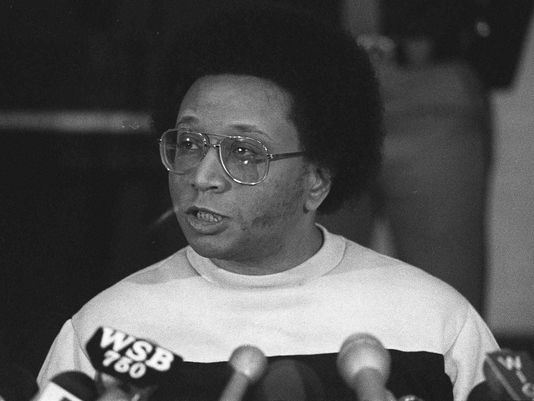
Payne makes contact with the alleged Atlanta Monster.
Episode 6
The Splash

Payne and the team gear up for a closer look at the so-called “bridge incident.”
Episode 7
Conspiracy?
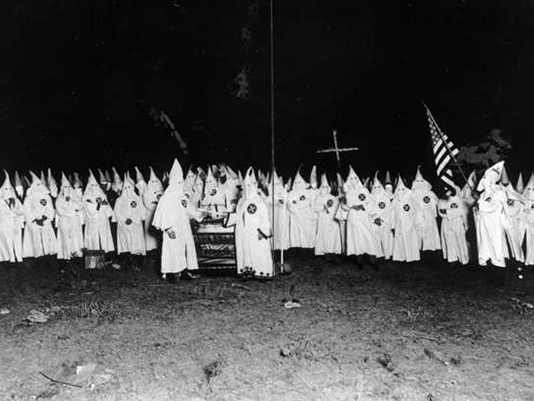
Payne explores theories of Klan involvement within the case.

